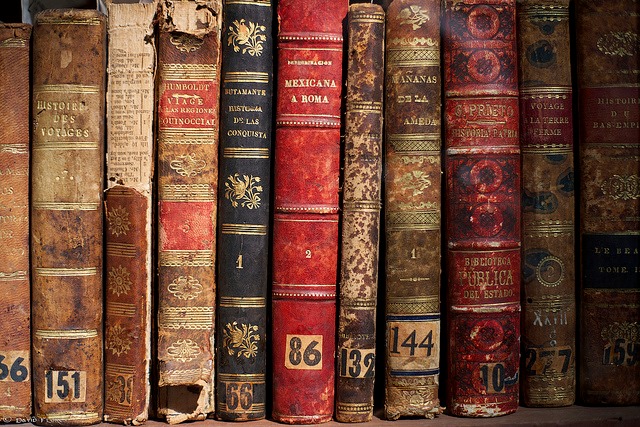
“And thou shalt make boards for the tabernacle of shittim wood standing up” (verse 15).
REGARDING the Tabernacle as typical of Christ, these boards of shittim wood overlaid with gold, the framework of the Tabernacle, represent Him in
the combination of the human and divine natures in His blessed Person, the foundation truth of Christianity, “God manifest in flesh.” But, taking the Tabernacle as typical of the Church, these boards represent the individual believers of whom the Church of God is composed.
THEIR POSITION.
Boards of shittim wood “standing up.” This intimates that they had been
previously cut down. Believers were once the children of wrath, even as others, growing wild in nature’s forest; but they had been selected by divine grace, and had been brought low by the convictions of the Spirit, and they are here seen standing in grace (Romans verse 2).
THE DESIGN.
This is stated in Exodus 25:8, “Let them make Me a sanctuary; that I may
dwell among them.” These boards represent believers in Christ, builded together for a habitation of God through the Spirit (Ephesians 2:22). This is God’s ideal of the Church as a whole, according to the pattern shewn in the Mount (Hebrews 8:5). It is also designed to be a model for believers gathered together in Church fellowship on earth.
THE DIMENSIONS OF THE BOARDS.
“Ten cubits shall be the length of a board, and a cubit and a half shall be
the breadth of one board” (verse 16).
Taking the cubit to be nearly one foot ten inches in length, the height of each board would be about eighteen feet three inches, and the breadth two feet nine inches. Thus, ten cubits was the height of the Tabernacle, one third of the height of the holy place in Solomon’s Temple, which was thirty cubits, and half the height of the most holy place there, which was twenty cubits.
Though every regenerate soul is born into the family of God, and as such has his place in the Church of God, yet, in order to fill that place profitably
in the assembly of believers, three things are requisite – faith, hope, charity. Faith in the atonement, hope of the glory, and love to all saints. Faith, hope, charity, these three-depth, height, and breadth. DEPTH – down to the sockets of silver, FAITH in redemption. HEIGHT-up to the rings of gold, HOPE of coming glory. BREADTH – extending to the other boards on either side. “Love in the truth” to all them that have known the truth, for the truth’s sake which dwelleth in us (2 John 1:2).
THE TENONS.
“Two tenons [hands] shall there be in one board, set in order one against
another [made parallel one to another]; thus shalt thou make for all the boards of the Tabernacle” (verse 17).
According to their Hebrew name, they appear to represent the HANDS of faith, laying hold of the redemption which is in Christ Jesus; and according to their position at the bottom of the boards, they suggest the idea of the FEET
of faith, standing firm on redemption, and the redemption price.
“Set in order.” So as to fit exactly into the sockets. No slackness, no
wavering, but steadfast and unmovable, stablished, strengthened, settled.
THE BOARDS ON THE SOUTH AND NORTH SIDES
“And thou shalt make the boards for the Tabernacle, twenty boards on the south side southward. And for the second side of the Tabernacle on the
north side there shall be twenty boards” (verses 18, 20).
Twenty boards, of a cubit and a half, measure thirty cubits, which would be about fifty-five feet long. The length of the holy place and of the most holy together, of the Temple, was sixty cubits, or double the length of the
Tabernacle.
THE SOCKETS OF SILVER.
“And thou shalt make forty sockets of silver under the twenty boards; two
sockets under one board for his two tenons [hands], and two sockets under another board for his two tenons” (verse 19).
“The comparison of Exodus 30:11-16 and 38:25-28, with 1 Peter 1:18, 19, will give us most clearly and beautifully the spiritual import of these sockets of silver. Every Israelite passing among them that were numbered, whether
rich or poor, was required to give a ransom for his soul, of half a shekel, after the shekel of the sanctuary, in value about fifteen pence. Peter explains this, “Forasmuch as ye know that ye were not redeemed with such corruptible things, as silver and gold . . . but with the precious blood of Christ, as of a lamb without blemish and without spot.”
All God’s people are numbered as a RANSOMED people; to be reckoned among them on the ground of profession merely, is to come under judgment. This ‘is illustrated by the numbering of Israel by David, as recorded in 2
Samuel 24., where no mention is made of the redemption price having been paid. In the instance recorded in Matthew 17:24, the tribute required was not the tribute to Caesar, but the half shekel of the sanctuary; the Son of Man required no ransom for His soul. But from the abundance of the sea, the piece of money, “the stater,” value two shillings and sixpence – was provided, double the ransom price, as Christ said to Peter, “For Me and thee.” In Exodus 38:25-27, we read, “And the silver of them that were numbered of the congregation was a hundred talents, and a thousand seven hundred and threescore and fifteen shekels after the shekel of the sanctuary.. And of the hundred talents of silver were cast the sockets of the sanctuary, and the
sockets of the vail; a hundred sockets of the hundred talents, a talent for a socket.”

Leave a comment